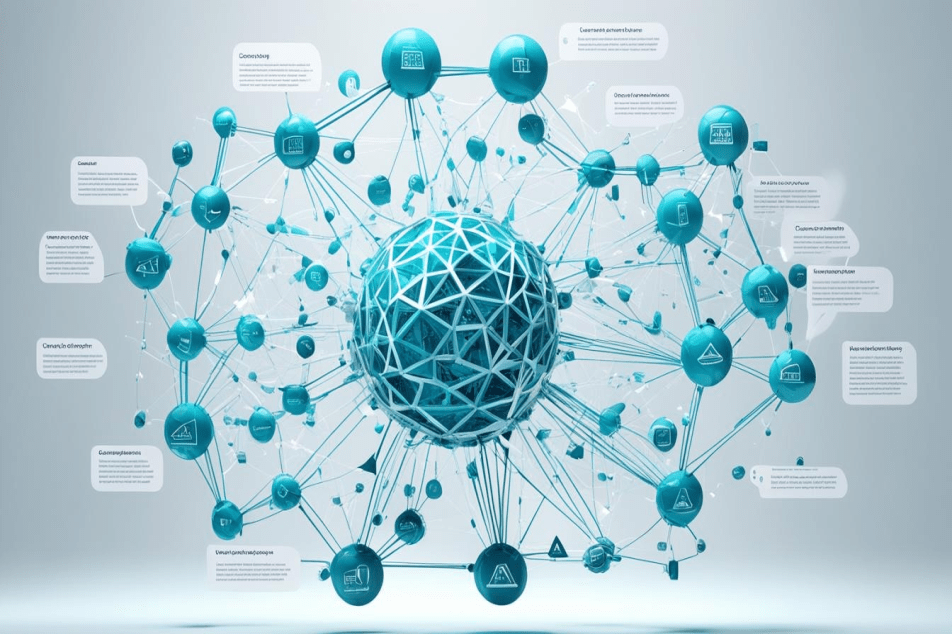
Enter the intricate world of machine learning, where the Perceptron represents a significant milestone on the path to sophisticated artificial intelligence. Discover how perceptrons, like the neurons in your brain, play a vital role in processing and interpreting complex data, forming the foundation of neural networks.
Imagine a bridge between the human mind's intricate circuitry and a computer's binary world. In machine learning, perceptrons function as this bridge, providing a framework that enables computers to learn from experience and make intelligent decisions.
Just as neurons transmit signals in the brain, perceptrons process input signals, weigh them, and produce outputs that form the basis of AI decision-making. This concept, introduced by Frank Rosenblatt in the 1950s, revolutionized the way machines mimic cognitive functions.
The Perceptron: Bridging Biology and Machine Learning
The essential components behind artificial intelligence's capacity for problem-solving and pattern recognition take inspiration from the biological structure of the human brain. A clear example of this is the perceptron, a term you've likely come across in the context of neural networks and binary classification within the field of machine learning.
As we dive into the role of perceptrons, it's crucial to understand their design, which mirrors the singular elegance of the biological neuron, and grasp how this influences computational paradigms within AI.
Before moving on to more complex concepts, let's take a moment to explore the biological and computational underpinnings of the perceptron, Frank Rosenblatt's groundbreaking contribution to the evolution of supervised learning algorithms, and the perceptron's role as a binary classifier within modern neural networks.
From Biological Neurons to Artificial Neurons
The biological neuron is the principal architectural unit of the brain, a sophisticated biological network teeming with billions of these specialized cells. This biological neuron comprises several parts including the cell nucleus, or soma, that processes information, dendrites (inputs), synapses (weights), and axons (outputs).

Drawing keen parallels, an artificial neuron, the foundational building block of any perceptron model, consists of nodes, inputs, weights, and outputs. This conceptual bridging has given rise to computational replicas of human cognition, your platforms for the next-era intelligence in machines through neural networks.
The Evolution of Computational Models: McCulloch-Pitts to Rosenblatt
The inception of artificial neurons owes much to the research conducted by Warren McCulloch and Walter Pitts, whose McCulloch-Pitts neuron laid the cornerstones of binary computational logic models. However, it was Frank Rosenblatt who advanced this concept into the perceptron we recognize today.
Through the perceptron learning rule, an algorithmic approach that dynamically adjusts a perceptron's weights in response to training data, Rosenblatt endowed these models with a powerful ability: the faculty of supervised learning, a critical advance ultimately leading to the creation of more nuanced neural networks.
Perceptron and Binary Classification
In the vast arenas of natural language processing, fraud detection, and beyond, perceptrons perform as binary classifiers, systems that make yes-or-no decisions reminiscent of your brain's binary processing capabilities.
The strength of a perceptron in binary classification tasks lies in its supervised learning prowess - analyzing labeled training data, refining its output through tunable weights and biases, and improving over time to make reliable predictions.
Metrics such as precision and recall quantify this improvement, proof of the practical value that these computational models bring to the fields they are applied to. Next, we'll delve into the specifics of how a perceptron functions, from its core components to its place within the intricate dance of machine learning algorithms.
You've seen the convergence of biological principles with machine learning technology..
The transformation from simple McCulloch-Pitts neurons to advanced perceptrons and the parade of binary classification applications are testament to how integral these computational models are to the progression of artificial intelligence.
Core Components and Functionality of a Perceptron

A perceptron serves as a fundamental building block in neural networks, fashioned to simplify the complexities of data into discernible patterns through binary classifications. To grasp its operation, it's vital to unpack the perceptron's anatomy, understanding its core components including the input layer, weights, bias, and activation function.
These components are ingeniously orchestrated to enable the processing of information in a manner reminiscent of the human brain, with each bearing a specific function in determining the perceptron's output.
At the start of the perceptron framework, the input layer captures and channels different pieces of data, each linked to a weight, indicative of the significance the algorithm attributes to that specific input. Reflecting the adaptability and fluidity of learning, a bias term joins this mix, functioning as an adjuster that fine-tunes the perceptron's threshold level for activation.
Encountering the heart of the perceptron, the weighted inputs coalesce in a summation before being passed through an activation function. This kernel of the perceptron's decision-making process decides the outcome - whether to "fire" or remain inactive, corresponding to the binary outputs that underpin the system's classifying capabilities. Some of the more common activation functions you'll encounter include the binary step function, the sigmoid function, and the rectified linear unit (ReLU).
Finally, the manifestation of learning within the perceptron occurs through algorithms like the perceptron learning algorithm or backpropagation. These supervised learning algorithms iteratively adjust the model's weights and bias to reduce the predictive error, honing the perceptron's ability to classify data meticulously. In this way, the perceptron lays the groundwork for the evolution of intricate neural networks that epitomize the dawn of deep learning technologies.

Consider this your stepping stone into more complex territories of artificial intelligence, where the perceptron not only applies classification but also stands as a testament to machines' burgeoning capability to learn, resembling our own neural frameworks.
Perceptron Applications in Modern Machine Learning

A more profound understanding of perceptron applications, particularly within the realms of neural networks and deep learning, reveals the profound impact these models have on our continuous journey towards realizing highly advanced machine intelligence.
Single vs. Multilayer Perceptrons: Scope and Limitations
When it comes to perceptrons, distinguishing between single-layer and multilayer structures is vital. Your journey starts with the single-layer perceptron, invaluable for recognizing linearly separable patterns and serving as an excellent vehicle for simpler, less complex tasks. Yet, its potential is bounded by this capability alone.

In stark contrast, multilayer perceptrons, equipped with hidden layers, unfurl before you a spectrum of possibilities. Their processing power transcends the single-layer's confines, allowing them to untangle intricate linear and non-linear patterns, making them indispensable tools for complex undertakings such as image and speech recognition.
The Algorithm's Role in Supervised Learning
In the sphere of supervised learning, the perceptron algorithm commands attention due to its adeptness at calibrating its own synaptic strength - the weights - leveraging labeled training data to perfection. Each iteration incrementally refines its acumen in data classification, an iterative process that polishes its ability to demystify and tag data with astonishing accuracy.
Supervised learning is a machine learning technique where a model learns from labeled data to make predictions or classifications based on the patterns it discovers.
This process not only exemplifies adaptability but also elevates the perceptron to the status of a quintessential instrument in crafting intelligent, data-infused solutions across a myriad of machine learning applications.
Perceptrons in Deep Learning and Neural Network Evolution
Step into the dynamic world of deep learning, and you will find that perceptrons have carved a niche for themselves as foundational elements of sophisticated neural networks.
These humble units have evolved from fundamental nodes weighing inputs and deploying an activation function to generate binary outcomes to robust components of deep learning architectures.
As binary classifiers, perceptrons have laid the groundwork for subsequent innovations in neural network evolution, influencing an extensive array of AI applications and technology development that continues to break new ground in the field.
Embarking on the path of modern machine learning, you will quickly encounter perceptrons, the fundamental units that have significantly shaped the landscape of artificial intelligence.
Perceptrons are not just historical artifacts; their applications today are both pervasive and essential across various facets of AI technology.
What are your thoughts on the role of perceptrons in machine learning and their significance in advancing artificial intelligence towards greater sophistication?













